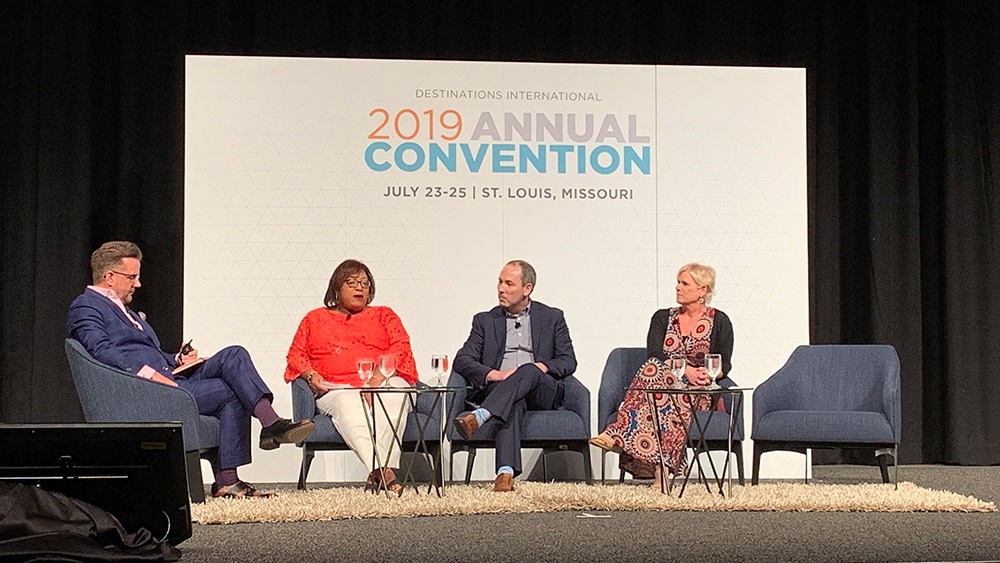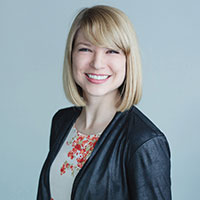Destinations International—the world’s largest resource for destination marketing organizations (DMOs)—holds its annual convention each July, where CVBs/DMOs from around the globe convene to swap ideas and glean travel industry insights from peers.
Though the attendee list at Destinations International Annual Convention in St. Louis was primarily comprised of destination organizations, there were a few meeting planners onsite to dish out some insights on their experiences with CVBs during the “Meeting Professionals Unplugged” education session.
Three seasoned meeting professionals participated in the session:
- Windy Christner, senior director for meetings and expositions at American Pharmacists Association (APhA)
- Matthew Wales, vice president of member services and events at American Association of Colleges for Teacher Education (AACTE)
- Deirdre “Dee” Clemmons, senior vice president of events and strategic partnerships at Airports Council International–North America
Here are five key takeaways from the session that meeting and event professionals can apply to their work with CVBs when planning meetings.
1. Treat the CVB Folks As True Partners
Most planners agree that CVBs are a valuable resource when organizing meetings, but the panel stressed integrating CVB sales and services into your meeting planning team.
“I don’t know what I’d do without my services person,” Christner said of the services teams at CVBs. “I consider them a true member of my team—they are a part of my meeting family.”
Clemmons and Wales both echoed this sentiment and stressed that treating your CVBs as true partners and members of your team when planning a meeting in a destination can only help manage workload and make the planning process run smoothly.
2. Use CVB Services for All Sizes of Meetings—Even the Small Ones
The perception that planners should only leverage the help of CVBs when they are planning large meetings of hundreds or thousands is one all three panel members debunked.
All three stressed that they always recommend to their fellow planners to utilize CVB services, no matter the meeting size. In their experiences, they’ve found the partnership useful in all scenarios.
“I’ve utilized a bureau to book one room for an executive to 1,000 rooms for a meeting,” Clemmons said.
3. Go Beyond “Dates, Rates and Space” When Exploring Destinations
According to the “Global Portrait of Business Travelers” survey by session sponsor MMGY Global, 58% of business travelers believe it’s extremely important or very important to have time for leisure or to explore the destination while traveling for business.
Top leisure activities include trying local restaurants, visiting monuments and historic sites, shopping and attending concerts and sporting events, among others.
The panel said that they’ve seen activities like this requested more and more from attendees and continue to lean on CVB organizations to help.
[Related Content: PCMA, Destinations International Announce Event Partnership]
“People want local experiences,” Clemmons said. “I want CVBs to connect me to what’s going on in the community. What’s an example of a group that had an excellent experience that’s similar to my group? It’s not just ‘here are all the hotels in my destination’ anymore.”
“It’s not just about dates, rates and space anymore,” Christner agreed. “Now, what [CVBs] bring to us and show us what their city can do for us is why we pick their destination.”
Wales added that this shift in how people travel has increased the need to collaborate with CVBs even earlier in the meeting planning process—as early as before deciding on a venue or destination.
“Service does not start after the sale,” Wales said, referring to CVB services. “It starts way before, like during the site inspection and experiencing the destinations [in person].”
4. If You Have a Poor Meetings Experience in a Destination, Speak Up
Visit Seattle President and CEO Tom Norwalk joined the panelists on the stage to walk through a case study with Christner.
During a pre-site visit to Seattle in 2018, Christner and her small team saw the homelessness crisis up close and witnessed street crime and aggressive behavior toward her team members.
Christner was concerned that it might impact the safety and security of the 6,000-attendee American Pharmacists Association (APhA) conference at the Washington State Convention Center she had planned for March 2019.
[Related Content: 6 Tips to Improve Meeting Engagement From PCMA, Steelcase]
To help resolve the issue, Norwalk facilitated a meeting before the convention with his team, Christner, the Seattle Police Department and Downtown Seattle Association’s Safety Ambassadors to add safety patrols near the convention center.
He also brought Christner’s concerns to the mayor.
Meanwhile, Christner partnered with Seattle nonprofit Mary’s Place and her attendees raised over $9,000 at the convention to help homeless families in Seattle, in addition to collecting clothing and toiletry donations.
By speaking up about her experience and working closely with Visit Seattle, Norwalk said Christner’s meeting went smoothly and left a positive impact on the community while also helping the destination bring attention to the downtown street crime and homeless crisis.
“We had trouble before this, getting the mainstream media to cover this issue,” he said. “It took off when an organization that brings economic impact to our city said it.”
[Read This Next: San Francisco Combats Homelessness With Compassion]







